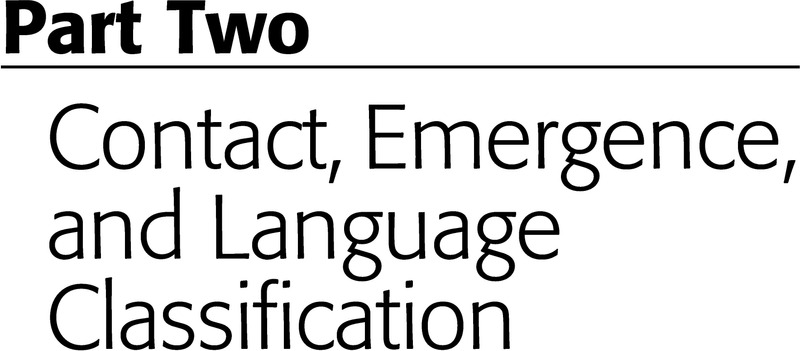Book contents
- The Cambridge Handbook of Language Contact
- Cambridge Handbooks in Language and Linguistics
- The Cambridge Handbook of Language Contact
- Copyright page
- Contents
- Maps Volume II
- Figures Volume II
- Tables Volume II
- Contributors
- Preface
- Introduction
- Part One Multilingualism
- Part Two Contact, Emergence, and Language Classification
- Part Three Lingua Francas
- Part Four Language Vitality
- Part Five Contact and Language Structures
- Author Index
- Language Index
- Subject Index
- References
Part Two - Contact, Emergence, and Language Classification
Published online by Cambridge University Press: 02 June 2022
- The Cambridge Handbook of Language Contact
- Cambridge Handbooks in Language and Linguistics
- The Cambridge Handbook of Language Contact
- Copyright page
- Contents
- Maps Volume II
- Figures Volume II
- Tables Volume II
- Contributors
- Preface
- Introduction
- Part One Multilingualism
- Part Two Contact, Emergence, and Language Classification
- Part Three Lingua Francas
- Part Four Language Vitality
- Part Five Contact and Language Structures
- Author Index
- Language Index
- Subject Index
- References
Summary

- Type
- Chapter
- Information
- The Cambridge Handbook of Language ContactVolume 2: Multilingualism in Population Structure, pp. 255 - 400Publisher: Cambridge University PressPrint publication year: 2022

